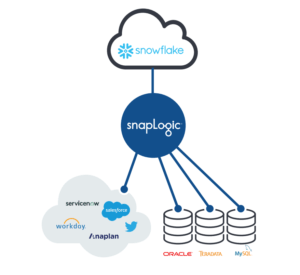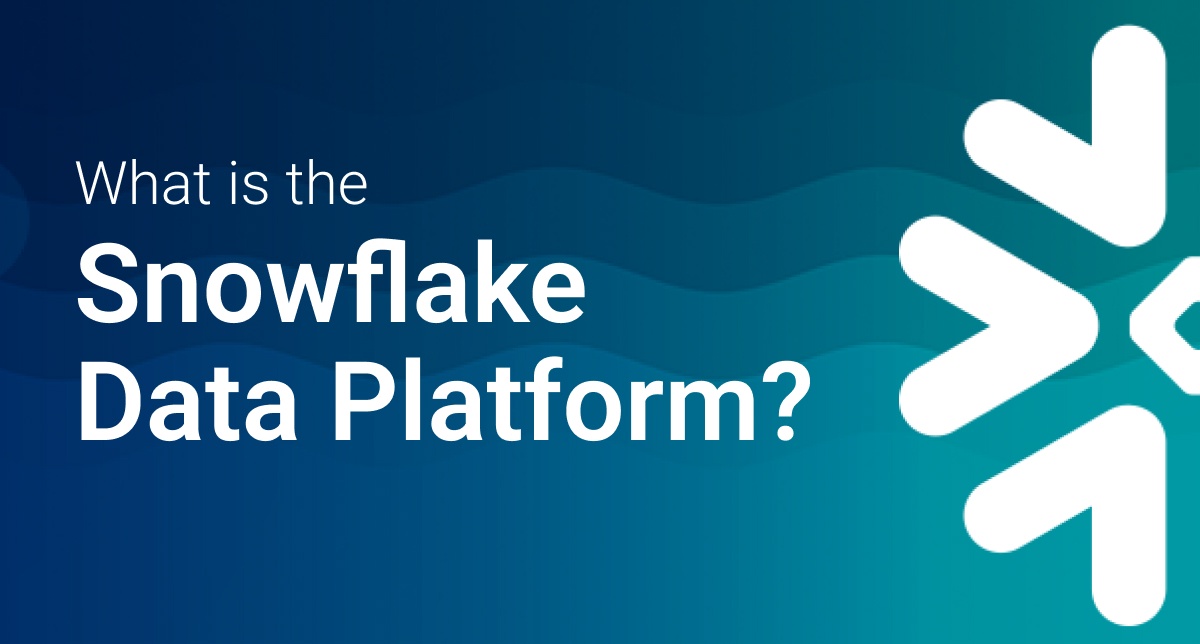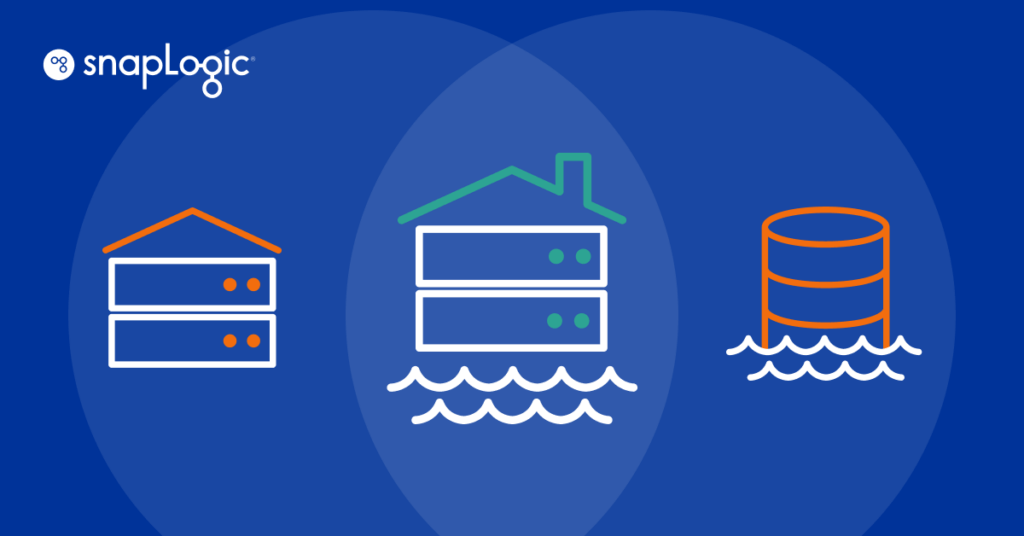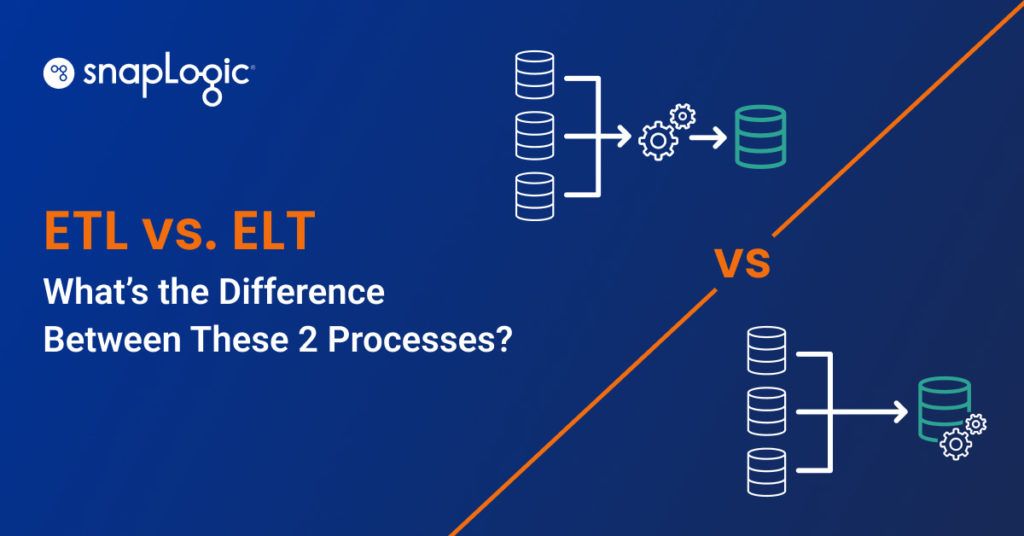While data is a core asset for modern enterprises, technology’s ability to scale has created a surge of big data. Managing and storing that data has become a critical function for modern business operations. Choosing a data platform that can handle massive volumes of big data, high speeds, and reliability — not to mention the ease of use, is top of mind. Most enterprises are already using a cloud data platform, but many are evaluating whether a data migration might be needed in order to stay competitive.
One of the most popular data platforms is Snowflake, which operates as a cloud data warehouse and is heralded for its ability to support multi-cloud infrastructure environments. Snowflake is a data warehouse built on top of the Amazon Web Services or Microsoft Azure cloud infrastructure and allows storage and computing to scale independently.
But, first… Before we get into why Snowflake has become so popular, let’s learn what it is and how it works.
What is Snowflake?

Developed in 2012, Snowflake is a fully managed SaaS (software as a service) that provides a single platform for data warehousing, data lakes, data engineering, data science, data application development, and secure sharing and consumption of real-time / shared data. Snowflake features out-of-the-box features like separation of storage and compute, on-the-fly scalable compute, data sharing, data cloning, and third-party tools support in order to handle the demanding needs of growing enterprises.
Bonus fact: Snowflakes’ name was chosen as a tribute to the founders’ (Benoit Dageville, Thierry Cruanes, and Marcin Żukowski’s) common love for skiing.
What makes up the Snowflake platform?
How Snowflake is designed is through three main components. These are the foundation for Snowflake’s cloud data platform:
- Cloud services. Snowflake uses ANSI SQL for cloud services empowering users to optimize their data and manage their infrastructure. Snowflake handles the security and encryption of stored data. They maintain robust data warehousing certifications such as PCI DSS and HIPAA. Services include authentication, infrastructure management, query parsing and optimization, metadata management, and access control.
- Query processing. The compute layer of Snowflake is made up of virtual cloud data warehouses that let you analyze data through requests. Each Snowflake virtual warehouse is an independent cluster and they do not compete for computing resources nor affect the performance of each other — which means workload concurrency is never a problem.
- Database storage. A Snowflake database is where an organization’s uploaded structured and semistructured data sets are held for processing and analysis. Snowflake automatically manages all parts of the data storage process, including organization, structure, metadata, file size, compression, and statistics.
Snowflake’s stock price: A brief analysis of its growth story (SNOW)
Snowflake (NYSE: SNOW) has been one of the hottest tech stocks on the market over the past several years. The cloud-based data warehousing company went public in September 2020 and has seen its stock price skyrocket ever since. But what’s driving this growth and is it sustainable? Let’s dive in.

Key Drivers of Snowflake’s Stock Price Growth
Snowflake’s innovative technology and strong customer base have been major contributors to its stock price growth. The company’s cloud-based data warehousing solutions have proven to be a hit with businesses, which are increasingly looking to leverage data to drive growth. Additionally, Snowflake has been able to expand its customer base rapidly, with big-name companies like Walmart and Salesforce among its customers.
Sustainability of Snowflake’s Stock Price Growth
While there’s no denying that Snowflake has been an incredible success story, there are some concerns about the sustainability of its stock price growth. Some analysts worry that the company’s rapid expansion may not be sustainable and that its current valuation may be a bit inflated. Additionally, the company is facing increasing competition from other data warehousing providers, which could impact its growth moving forward.
Snowflake’s stock price growth has been nothing short of phenomenal. However, it’s important to consider the sustainability of this growth, as well as the potential risks, when considering investing in the company. As with any investment, it’s important to do your own research and consult with a financial advisor before making any decisions.
What are the benefits of using Snowflake?
There are multiple benefits to choosing Snowflake, including:
- Instant, nearly unlimited scalability. Snowflake architecture uses a single elastic performance engine that delivers high speed and scalability. Snowflake supports as many concurrent users and workloads as you can throw at it, from interactive to batch. This powerful ability lies in its multi-cluster resource isolation. It’s high-performing and robust, giving enterprises the confidence they need that they’ll be able to handle every data workload. Snowflakes’ single engine powers everything from complex data pipelines, analytics, and feature engineering, to interactive applications across essential data workloads. With SQL query support and the Snowpark developer framework for Java and Scala access, Snowflake makes it easy for users with all skill set levels to leverage data.
- Automation made easy. Enterprises no longer have time for manual data management and maintenance; they must move fast and accurately. Automation makes this possible. Snowflake enables enterprises to automate data management, security, governance, availability, and data resiliency. This drives scalability, optimizes costs, reduces downtime, and helps improve operational efficiency. It’s built for high reliability and availability and it automates data replication for fast recovery.
- A single copy of data, is shared securely, anywhere. Snowflake eliminates ETL and data silos, with seamless cross-cloud and cross-region connections and data sharing. Anyone who needs access to shared secure data can get a single copy via the data cloud, with the confidence that governance and compliance policies are in place. With a single shared data source, teams across the enterprise and the business’s ecosystem can be sure they are working from a single source of truth, making remote collaboration and decision-making fast and easy.
- Third-party data integrations. Additionally, the Snowflake Data Marketplace offers third-party data and lets you connect with Snowflake customers to extend workflows with data services and third-party applications. An integration platform as a service (iPaaS) like SnapLogic makes integrating third-party data sources easy and automated. SnapLogic’s pre-built Snowflake connectors make it easy for anyone to create data pipelines to automate workflows across the enterprise.
What is Snowflake’s pricing model?
Traditional data warehouse software is built on existing on-premises databases or software platforms. Snowflake was designed to leverage the opportunities of mass cloud data storage and is built on Amazon s3. They offer a flexible pricing model where you pay for the computing and cloud storage that you actually use. They offer multiple pricing options for Snowflake accounts including on-demand per-second pricing with zero long-term commitments or pre-purchased Snowflake capacity options. Compute usage is billed on a per-second basis, with a minimum of 60 seconds. They offer a free trial period.
How does Snowflake work?
Snowflake, a leading cloud data platform, has revolutionized the way organizations handle and analyze vast volumes of data. But what makes Snowflake stand out in the crowded landscape of data warehousing solutions? Let’s delve into the mechanics of how Snowflake operates and the unique features that set it apart.
Decoupled Architecture:
Snowflake’s architecture is ingeniously designed with three decoupled layers – Storage, Compute, and Cloud Services. This separation allows for unparalleled scalability, flexibility, and performance:
- Storage Layer: At its foundation, Snowflake utilizes scalable cloud storage services, ensuring high data replication, availability, and organization. Users can seamlessly organize information in databases according to their specific needs.
- Compute Layer: Employing Massively Parallel Processing (MPP) clusters, Snowflake allocates compute resources for tasks such as loading, transforming, and querying data. Users can isolate workloads within virtual warehouses and specify database access, optimizing performance and resource utilization.
- Cloud Services Layer: This layer encompasses a suite of services including metadata management, security, access control, and infrastructure management. It facilitates communication with client applications, enhancing user interaction with the platform.
Elastic Scalability:
One of Snowflake’s hallmark features is its ability to scale on demand. Whether you’re dealing with batch data processing, interactive analytics, or complex data pipelines, Snowflake can adjust its capacity and performance to meet varying workloads. This eliminates the need for upfront capacity planning and maintenance of underutilized resources.
Handling Semi-Structured Data:
Snowflake shines in its native support for semi-structured data formats like JSON, Avro, XML, and Parquet. Utilizing the VARIANT data type, users can store and manage semi-structured data in its native form within relational tables. This feature allows for schema-less storage, ensuring no loss of information or performance lags, and automatic discovery of attributes for better data access and compression.
Optimized Performance and Resource Management:
Snowflake’s unique architecture enables dynamic modification of configurations and independent scaling of resources. This adaptability means that users don’t have to manually manage resources or use specialized databases for different data formats. Snowflake adapts to each usage scenario, ensuring optimal allocation of IO, memory, and CPU resources.
Enhanced Accessibility and Collaboration:
Snowflake is not just a powerhouse for data storage and analysis; it’s also a catalyst for business growth and collaboration. By integrating with platforms like SnapLogic, organizations can further leverage Snowflake’s capabilities, making data accessible to non-technical teams and supporting various business initiatives. This synergy increases the ROI of Snowflake deployments and improves operational efficiency across the board.
In conclusion, Snowflake’s innovative architecture, elastic scalability, versatile data handling, and optimized performance make it a go-to solution for organizations seeking to harness the full potential of their data. When paired with integration platforms like SnapLogic, the possibilities for data-driven insights and business growth are boundless.
What is Snowflake Snowpark?
Snowflake Snowpark is a versatile developer environment within Snowflake, designed to securely deploy and process non-SQL code. It supports a variety of programming languages, including Python, Java, and Scala, allowing developers to work in their language of choice. Snowpark features libraries and runtimes that facilitate the writing of queries and data transformations using familiar DataFrames, pushing down processing to leverage the performance and scale of Snowflake’s elastic processing engine.
One of the key features of Snowpark is the DataFrame API, which enables efficient scaling of feature engineering and simplifies Machine Learning (ML) training execution directly in Snowflake. Additionally, Snowpark offers a unified repository for an organization’s ML models through the Snowpark Model Registry, streamlining and scaling MLOps.
Developers can also create User-Defined Functions (UDFs) to execute custom Python, Java, and Scala code in Snowflake, including business logic or trained machine learning models. This feature is enhanced by the embedded Anaconda repository, providing effortless access to a plethora of open-source libraries.
Furthermore, Snowpark facilitates the operationalization and orchestration of DataFrame operations and custom code, allowing them to run on a desired schedule and at scale. It also introduces Snowpark Container Services, enabling the registration, deployment, and running of container images in Snowflake-managed infrastructure.
Can I integrate data into Snowflake with SnapLogic?

SnapLogic and Snowflake have joined forces to simplify data integration and data warehousing via the cloud. SnapLogic offers a fast, easy, and visual integration platform that helps customers integrate their on-premises and cloud-based data sources and applications without any coding. SnapLogic now offers ten pre-built “Snaps” that connect multiple data sources and analytics tools to the Snowflake cloud data warehouse solution. The data integration with Snowflake includes Snaps for bulk load, upsert, and unload in addition to standard CRUD (create, read, update, and delete) functionality. SnapLogic’s intelligent integration platform allows Snaps to easily connect multiple data sources (including Teradata, Oracle, MySQL) and applications (including Salesforce, Workday, and Anaplan) to Snowflake without any coding.








